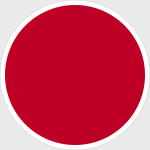DeAgostini DAWF26 Imperial Japanese Army Nakajima Ki-27 Type 97 "Nate" Fighter - Lt. Col. Toshio Kato, 1st Sentai, Nomonhan, Mongolia, 1939 [With Collector Magazine] (1:72 Scale)
"Tora! Tora! Tora!"
- Predetermined Japanese signal indicating they had achieved complete surprise leading up to the aerial assault at Pearl Harbor, December 7th, 1941
 The Nakajima Ki-27 (Type 97 Fighter) was the main fighter aircraft used by the Imperial Japanese Army Air Force up until 1940. Its Allied nickname was "Nate", although it was called "Abdul" in the "China Burma India" (CBI) theater by many post war sources; Allied Intelligence had reserved that name for the nonexistent Mitsubishi Navy Type 97 fighter, expected to be the successor to the carrier-borne Type 96 (Mitsubishi A5M) with retractable landing gear and an enclosed cockpit.
The Nakajima Ki-27 (Type 97 Fighter) was the main fighter aircraft used by the Imperial Japanese Army Air Force up until 1940. Its Allied nickname was "Nate", although it was called "Abdul" in the "China Burma India" (CBI) theater by many post war sources; Allied Intelligence had reserved that name for the nonexistent Mitsubishi Navy Type 97 fighter, expected to be the successor to the carrier-borne Type 96 (Mitsubishi A5M) with retractable landing gear and an enclosed cockpit.
In 1935, the Imperial Japanese Army held a competition between Nakajima, Mitsubishi, and Kawasaki to design a low-wing monoplane to replace the Kawasaki Ki-10 (Army Type 95 Fighter) biplane. The new fighter was to also exhibit better performance than the experimental Mitsubishi Ki-18.
The results were the Nakajima Ki-27, the Kawasaki Ki-28, and the Mitsubishi Ki-33 (a modification of the Mitsubishi A5M carrier-based fighter). The Nakajima design was based on its earlier Ki-11 monoplane fighter which lost to the Ki-10 in the Type 95 Fighter competition. When the follow-up Nakajima Ki-12 proposal with a liquid-cooled engine and retractable landing gear was deemed too complex by the Japanese officials, the Ki-27 was designed by Koyama Yasushi to have an air-cooled radial engine and fixed landing gear. The aircraft had the Nakajima trademark wing with a straight leading edge and tapered trailing edge which would reappear again on the Ki-43, Ki-44, and Ki-84.
The Ki-27 made its first flight on October 15th, 1936. Although it had a slower top speed and worse climb performance than its competitors, the Army chose the Nakajima design for its outstanding turning ability granted by its remarkably low wing loading. The Army ordered 10 pre-production samples (Ki-27a) for further testing, which featured an enclosed cockpit with sliding canopy and larger wings.
The type was officially accepted into service in 1937 as the Army Type 97 Fighter. In addition to Nakajima, the Ki-27 was also manufactured by Tachikawa Aircraft Company Ltd and Manshukoku Hikoki Seizo KK, with a total of 3,368 built before production ended in 1942.
Pictured here is a 1:72 scale replica of an Imperial Japanese Navy Nakajima Ki-27 Type 97 "Nate" fighter that was piloted by Lt. Col. Toshio Kato, who was attached to the 1st Sentai, then deployed to Nomonhan, Mongolia, during 1939.
Sold Out!
Dimensions:
Wingspan: 8-1/2-inches
Length: 5-3/4-inches
Release Date: February 2021
Historical Account: "Mongolian Beef" - In the 1939 Battle of Khalkhin Gol against the USSR in Mongolia, the Ki-27 faced both Polikarpov I-15 biplane and Polikarpov I-16 monoplane fighters. In the initial phase of the conflict, its performance was a match for the early model I-16s, and was considerably superior to the I-15 biplane. With better trained Ki-27 pilots, the IJAAF gained aerial superiority. The Ki-27 was armed with two 7.7 mm (.303 in) Type 89 machine guns and as with most aircraft of the period, lacked armor protection for the pilot and self-sealing or fire suppression in the fuel tanks.
Later, the Soviet Air Force received improved I-16s. The faster, more heavily armed (with twin wing-mounted 20mm ShVAK cannons) and armored I-16 now nullified the Ki-27's advantages and it could now escape from the Ki-27 in a dive. The VVS introduced new tactics consisting of flying in large tightly knit formations, attacking with altitude and/or speed advantage and hit-and-run (high-energy) tactics much as Claire Chennault would later formulate for the 1941-era Flying Tigers (likewise to fly against Japanese forces).
Japanese losses mounted but despite this they claimed 1,340 aircraft (six times the admitted Soviet losses and three times as many as Soviet aircraft admitted to being in the theatre). Japanese losses numbered 120 (including Ki-10s) while the Russians claimed 215 vs. a peak Japanese strength of 200 fighters. (Over claiming remained commonplace through World War II, despite gun cameras and expert intelligence assessments.) Top scoring pilot of the incident and top scoring IJAAF pilot on the Ki-27 and overall World War II IJAAF ace was Warrant Officer Hiromichi Shinohara, who claimed 58 Soviet planes (including an IJAAF record of 11 in one day) whilst flying Ki-27s, only to be shot down himself by a number of I-16s on August 27th, 1939.
The preference of Japanese fighter pilots for the Ki-27's high rate of turn caused the Army to focus excessively on maneuverability, a decision which later handicapped the development of faster and more heavily armed fighters. The Ki-27 served until the beginning of World War II in the Pacific, escorting bombers attacking Malaya, Singapore, Netherlands East Indies, Burma and the Philippines (where it initially fared poorly against the Brewster F2A Buffalo).


